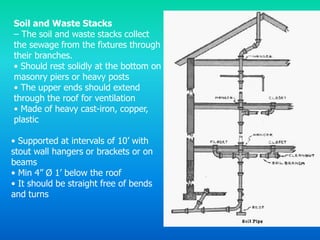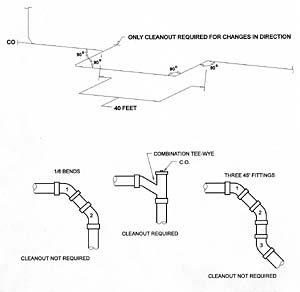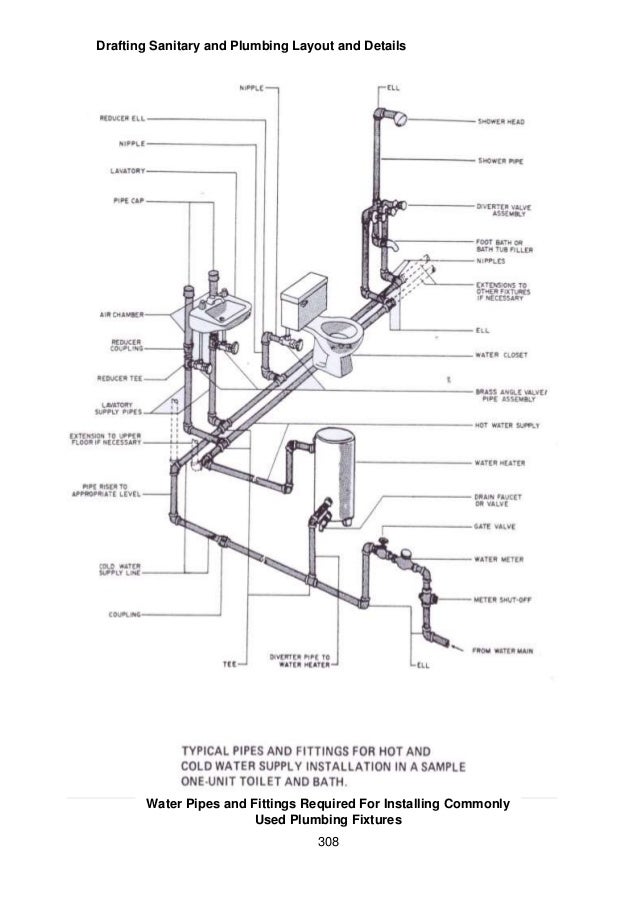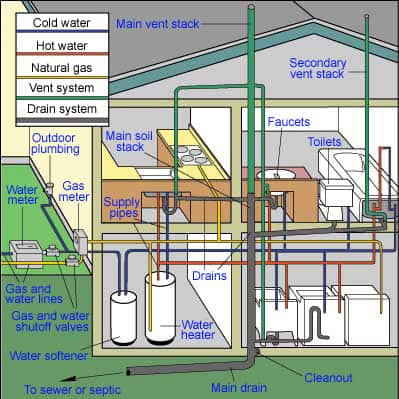Identify those properties involving plumbing design such as flow rate velocity pressure pressure drop etc. BSCE 3CEA 312.
Hygienic design of maintenance enclosures.

. The fixture and fixture traps. Introduction Plumbing is simply defined as any system that moves fluids for a wide range of application. 2 226 Pressure Pressure is defined as the force per unit area exerted by liquid or gas on a surface such sidewall of a.
Solve the application of those properties. The AMI Foundation Sanitary Design Principles encouragesallows innovation and drives continuous improvement. Plumbing fixtures devices and appurtenances shall be supplied with water in sufficient.
Hygienic compatibility with other plant systems. Sanitary Design Principles define our industry expectations. You can save yourself time trouble and money.
ASPE is committed to the advancement of the science of plumbing engineering the professional development and advancement of its members and the publics health welfare and safety. 2 Plumbing is the art of installing in buildings the pipes fixtures and other apparatus for bringing in the water supply and removing liquid and water-carried wastes. The soil waste and vent pipes.
Nonpotable water may be used for flushing water closets. Equipment design must ensure hygienic compatibility with other equipment and systems such as electrical hydraulics steam air and water. Plumbing fixtures devices and appurtenances shall be supplied with water in sufficient volume and pressure adequate to.
Maintenance enclosures and human machine interfaces such as push buttons valve handles switches and touchscreens must be designed to ensure food product water or product liquid does not penetrate or accumulate in or on the enclosure or interface. Basic principles of sanitary plumbing design Written By carlbeals35660 Thursday April 28 2022 Add Comment Edit Basic plumbing skills such as draining blocked pipes fixing leaking faucets and replacing broken taps are vital during emergencies. One subsystem brings freshwater in.
Plumbing follows the basic laws of nature gravity pressure and water seeking its own levelKnowing this you can understand its mysteries and make dozens of fixes to your homes plumbing system. Laterals should be laid at sufficient slope so as to develop self-cleansing velocities. From the walls to the floors and ceilings the design must prevent accumulation of water and in fact facilitate positive drainage and water removal.
3 Plumbing fixtures are receptacles intended to receive and discharge water liquid or water-carried wastes into a drainage system with which they are connected. The plumbing system should contain enough number of traps to avoid evolution of foul smells and the efficient function. Also physical design of the enclosures should be sloped or pitched to avoid use as storage area.
All premises intended for human use or habitation shall be provided with a supply of pure and wholesome water neither connected to unsafe water supply nor subject to backflow or back- siphonage. Back to Basics is a new column that will run periodically in PME reviewing the basic principles of plumbing engineering. This Handbook is intended to give reliable and authoritative information for plumbing system design and specification.
But it is also one of the greatest threats to food safety. This book is divided into 12 chapters that. Definitions and Basic Plumbing Principles Plumbing System The plumbing system of a building includes the water supply distributing pipes.
The storm water drainage with their devices appurtenances and connections within the building and outside the building within the. BASIC PRINCIPLES OF SANITARYPLUMBING DESIGN 20 Intended Learning Outcomes a. To supply water to different parts of the building.
The joints of the pipes should be made watertight. To provide sufficient amount of water supply each fixture 2. Validated cleaning and sanitizing protocols.
Checklist Scoring S Satisfactory Full Points M Marginal Half Points U Unsatisfactory Zero Points NA Not Applicable 2. A sanitary drainage system is a system of piping within public or private premises that conveys sewage or other liquid waste to an approved point of disposal. Objective of Plumbing 1.
It must be available for drinking cooking andcleaning. To remove and discharge human wastes and the other substances out of building into the public sewer or septic tank. THE BASIC PRINCIPLES GOVERNING THE NATIONAL PLUMBING CODE 1.
Basic Principles Of Plumbing System. To prevent back flow of used water into the water supply system. The layout of the system should be such as to permit easy cleaning in case of blockage.
We will also deal with the water supply system drainage system mode of. The plumbing system in your home is composed of two separate subsystems. In this chapter we will study the planning of plumbing and sanitation works basic norms for designing these systems necessity and use of plumbing drawings requirements of plumbing work agency tools required specifications of various materials the role of plumbing consultant etc.
The intent is to design and install sanitary drainage systems that will. Water accumulations controlled inside the facility Water is an essential part of products process and sanitation. All the Premises made for human use or habitation shall be provided with the supply of pure and water neither connected to unsafe water supply nor subject to backflow or back- siphonage.
BASIC PRINCIPLES OF SANITARYPLUMBING DESIGNENGINEERING UTILITIES II WATER SUPPLY Potable is clean water that is suitable for humandrinking. The building drain and building sewer.

Back To Basics Sanitary Drainage Systems 2003 02 06 Pm Engineer

Chapter 1 Basic Concepts Of Plumbing Issuu

Chapter 1 Basic Concepts Of Plumbing Issuu

Module 6 Module 4 Draft Sanitary And Plumbing Layout And Details




0 comments
Post a Comment